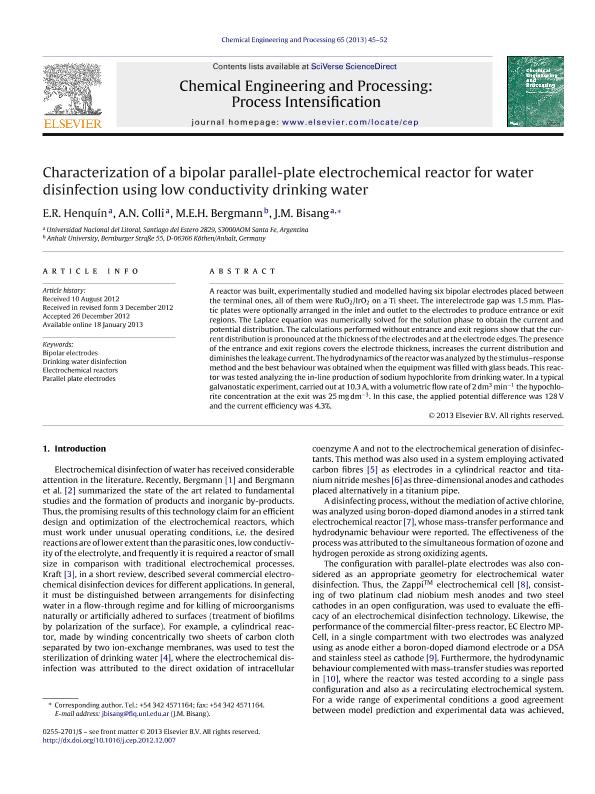Artículo
Characterization of a bipolar parallel-plate electrochemical reactor for water disinfection using low conductivity drinking water
Fecha de publicación:
03/2013
Editorial:
Elsevier
Revista:
Chemical Engineering and Processing
ISSN:
0255-2701
Idioma:
Inglés
Tipo de recurso:
Artículo publicado
Clasificación temática:
Resumen
A reactor was built, experimentally studied and modelled having six bipolar electrodes placed between the terminal ones, all of them were RuO2/IrO2 on a Ti sheet. The interelectrode gap was 1.5 mm. Plastic plates were optionally arranged in the inlet and outlet to the electrodes to produce entrance or exit regions. The Laplace equation was numerically solved for the solution phase to obtain the current and potential distribution. The calculations performed without entrance and exit regions show that the current distribution is pronounced at the thickness of the electrodes and at the electrode edges. The presence of the entrance and exit regions covers the electrode thickness, increases the current distribution and diminishes the leakage current. The hydrodynamics of the reactor was analysed by the stimulus-response method and the best behaviour was obtained when the equipment was filled with glass beads. This reactor was tested analysing the in-line production of sodium hypochlorite from drinking water. In a typical galvanostatic experiment, carried out at 10.3 A, with a volumetric flow rate of 2 dm3 min-1 the hypochlorite concentration at the exit was 25 mg dm-3. In this case, the applied potential difference was 128 V and the current efficiency was 4.3 %.
Archivos asociados
Licencia
Identificadores
Colecciones
Articulos(CCT - SANTA FE)
Articulos de CTRO.CIENTIFICO TECNOL.CONICET - SANTA FE
Articulos de CTRO.CIENTIFICO TECNOL.CONICET - SANTA FE
Citación
Henquín, Eduardo Rubén; Colli, Alejandro Nicolás; Bergmann, M. E. H.; Bisang, Jose Maria; Characterization of a bipolar parallel-plate electrochemical reactor for water disinfection using low conductivity drinking water; Elsevier; Chemical Engineering and Processing; 65; 3-2013; 45-52
Compartir
Altmétricas




